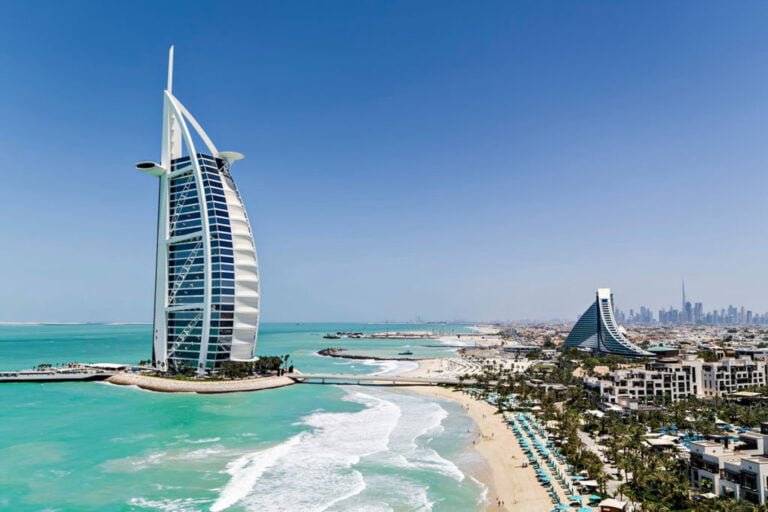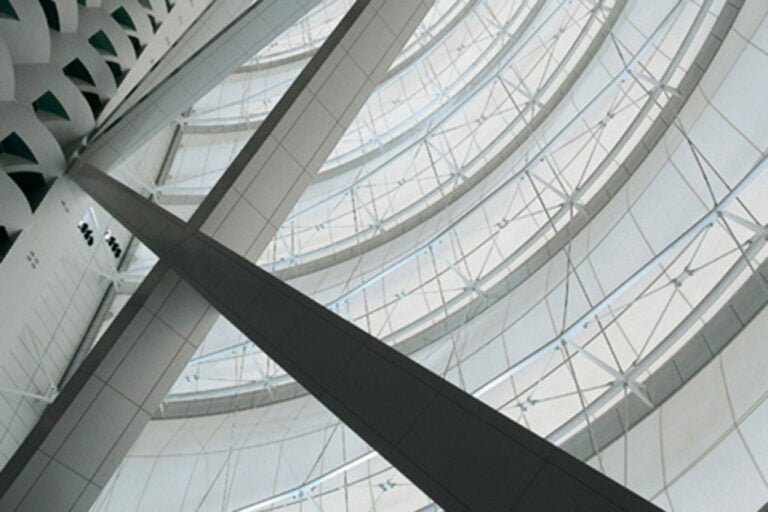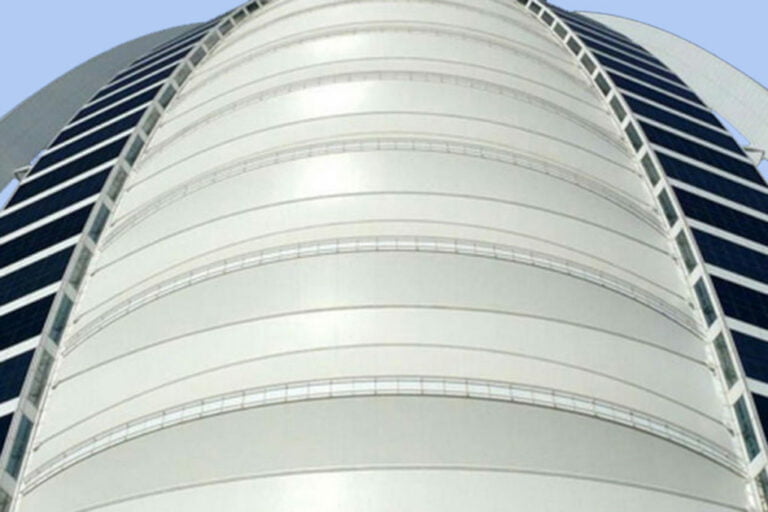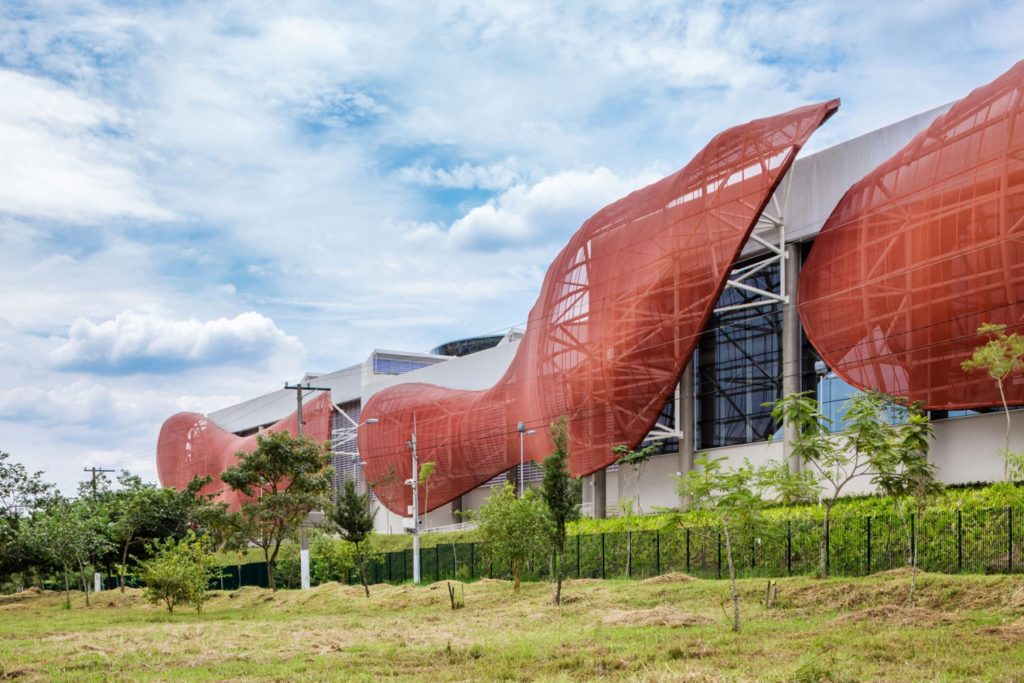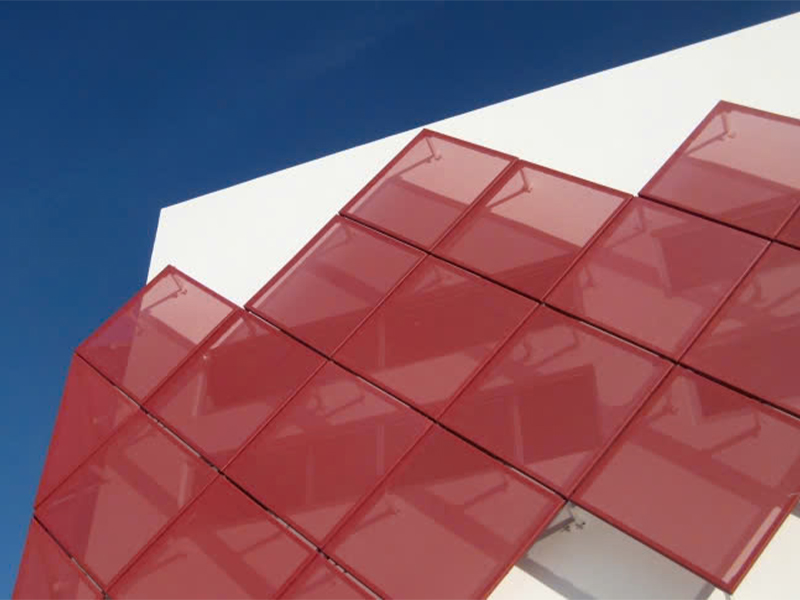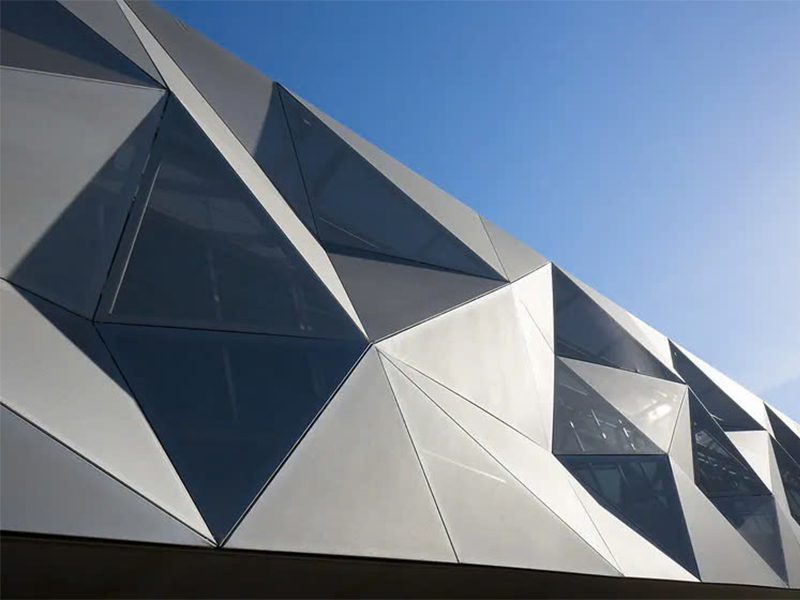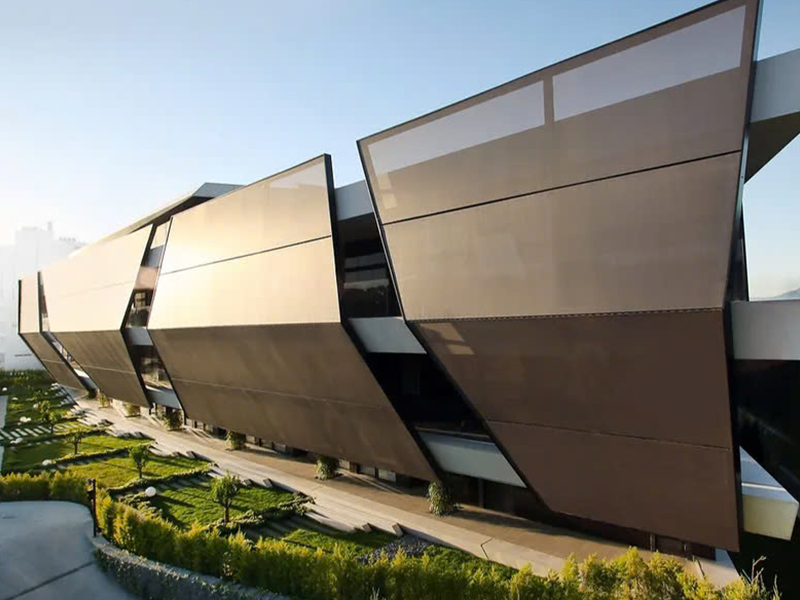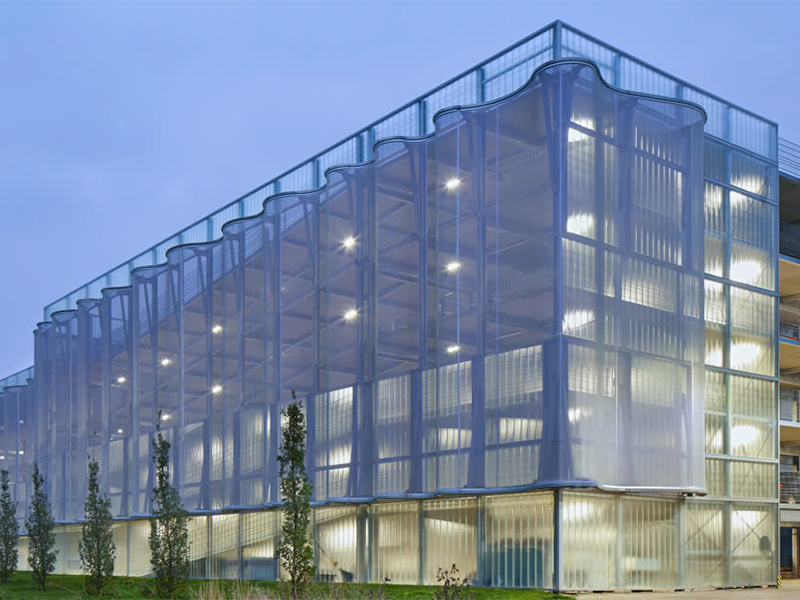Current Situation and Solution: Burj Al Arab Hotel Tensile Fabric Facade Design – Symbol of Luxury and Energy Efficiency
Standing tall at $321$ meters on a private artificial island, The Burj Al Arab opened on December 1, 1999, becoming one of the tallest and most luxurious hotels in the world. In addition, the Burj Al Arab Hotel's tensile fabric facade design is one of the most notable highlights of the building. The construction of this project was a proposed solution to deal with the economic challenges that Dubai faced in the late 80s, when its oil reserves were at risk of being depleted. With foresight, Sheikh Mohammed decided to turn his country into the most unique resort destination on the Arabian Gulf coast, looking for an architectural work that could become a symbol of Dubai rather than just another star hotel.
—
Technical Requirements Analysis & Solution Context
To transform Dubai into a high-end tourism hub, Sheikh Mohammed wanted an architectural work that could instantly evoke the image of the city in the viewer's mind, becoming a symbol of Dubai. This required a revolutionary design that went far beyond conventional hotel projects. The biggest challenge was designing a $321$ meter-high hotel, especially a $18$-storey atrium with a V-shaped floor plan, in Dubai's desert climate, where temperatures can reach $50^\circ C$. Using a conventional glass facade could turn the building into a giant "oven". Therefore, engineers needed to find a way to keep the heat from the sun to a minimum, while ensuring reasonable lighting throughout the building without turning the space into "a big dark cave". The solution must effectively protect against harsh sunlight but still provide enough light inside the skylight, while maintaining the aesthetics and symbolism of the building.
—
Technical Solutions
The Burj Al Arab Hotel's tensile fabric facade is the result of groundbreaking architectural and engineering innovation, addressing complex environmental and design challenges.
The birth of the Burj Al Arab Hotel shape
Tom Wright, architect of WKK Architects, had his breakthrough moment when he looked at a modern sailing yacht. He realized that a building shaped like a modern sailing yacht’s sail could evoke memories of Dubai’s seafaring heritage and reflect its future development. The image of the sail of a dhow – a traditional Arabian vessel – became a central inspiration, iconic and synonymous with the country.
Biggest challenges and PTFE material selection
The biggest challenge was to keep the temperature inside the atrium as low as possible while still ensuring adequate light. The solution was to create the world’s largest fabric curtain wall, which could protect the occupants from the scorching desert sun while providing sufficient light. Using Membrane material to replace the glass insert was the simplest and most economical solution, avoiding additional design costs or façade details.
PTFE material (Polytetrafluoroethylene) was used for the Burj Al Arab Hotel's tensile fabric facade for the following reasons:
- Single panels can be fabricated in almost any size and shape.
- Tensile facade is lightweight (approximately $1.5\text{ kg}/\text{m}^2$).
- PTFE material can withstand extreme temperatures from $-73^\circ C$ to $+232^\circ C$.
- Immune to UV degradation.
- Allows natural daylight to enter the interior and at the same time provides adequate shade as they are translucent, blocking out UV rays and excess heat.
- Reflects $75\%$ of sunlight, absorbs $10\%$ and transmits $15\%$.
Temperature control and lighting effects
With the $18$ floor facade covered by $12$ separate north-facing double-layered tensile membrane panels, this PTFE material allows less than $10\%$ of light to pass through, maintaining an optimal temperature inside the atrium and providing adequate illuminance. The two layers of PTFE allow white light to pass through but avoid overheating the interior, using a direct evaporative cooling method (heat energy transferred through the first fabric is removed by the air flow between the two fabrics). The central lobby is then cooled by evaporation of water from the holes. In the evening, the translucent PTFE facade on the Burj Al Arab Hotel's tensile fabric facade becomes a giant projection screen, creating a visual spectacle both outside and in the interior space.
—
Results and Performance Evaluation
The end result of the innovative engineering and architecture of the Burj Al Arab Hotel’s tensile fabric façade is the iconic sail-shaped silhouette of the Burj Al Arab – the beacon of modern Dubai. Not only is it the fifth tallest hotel in the world, it is also a symbol of luxury and architectural vision. The use of PTFE successfully solved the challenge of controlling temperature and light in the harsh desert environment, while creating a facade that is both functional and artistic. The ability to transform the façade into a giant projection screen at night enhances the visual experience. As Tom Wright said: “A building becomes iconic when its form is simple and unique. If you can draw a building with a few strokes of a pen and people not only recognize the structure but also associate it with a place on earth, you have gone a long way towards creating something iconic.” The Burj Al Arab demonstrates this brilliantly.
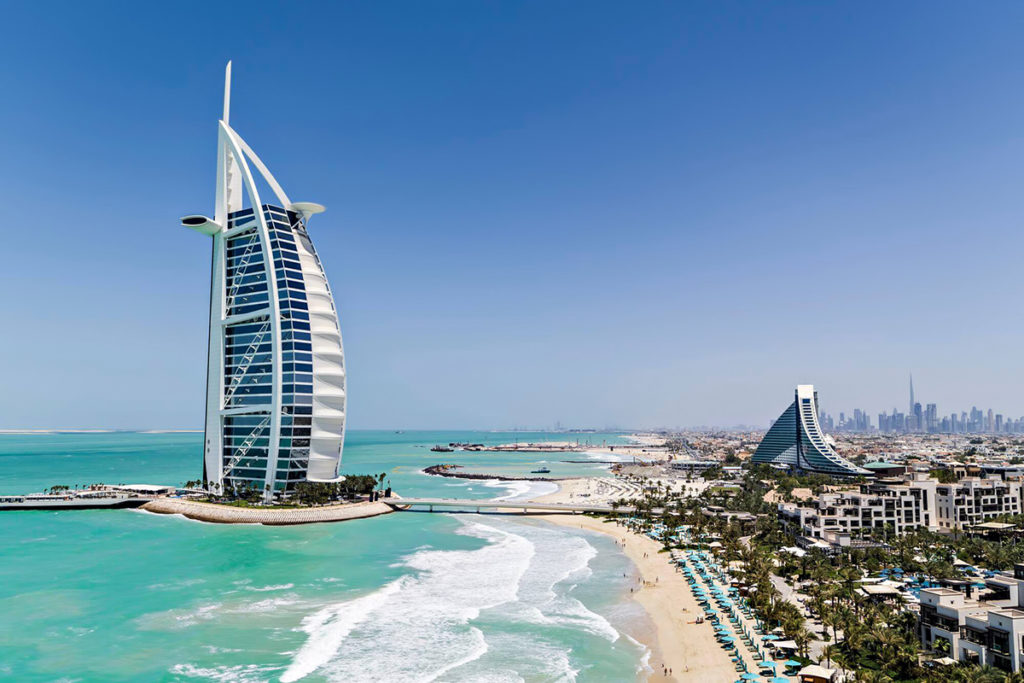
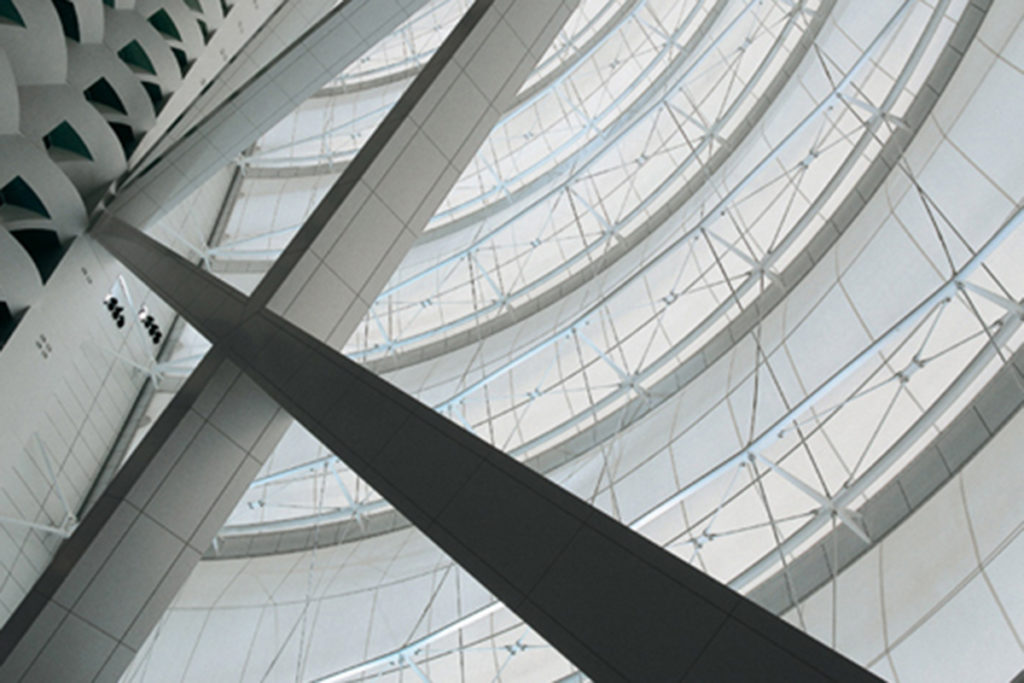

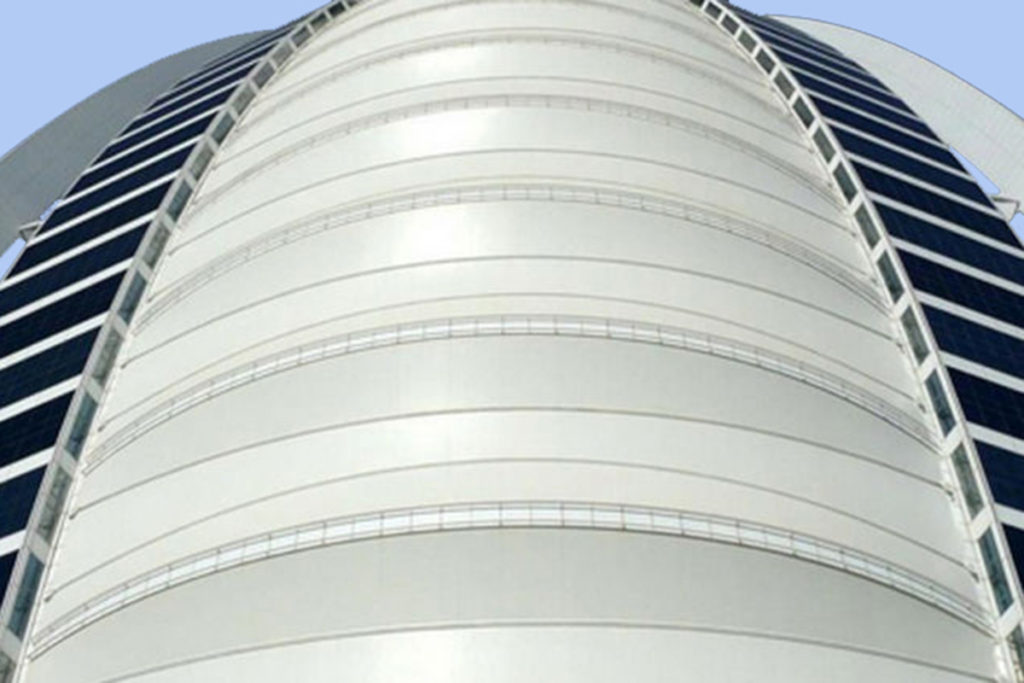
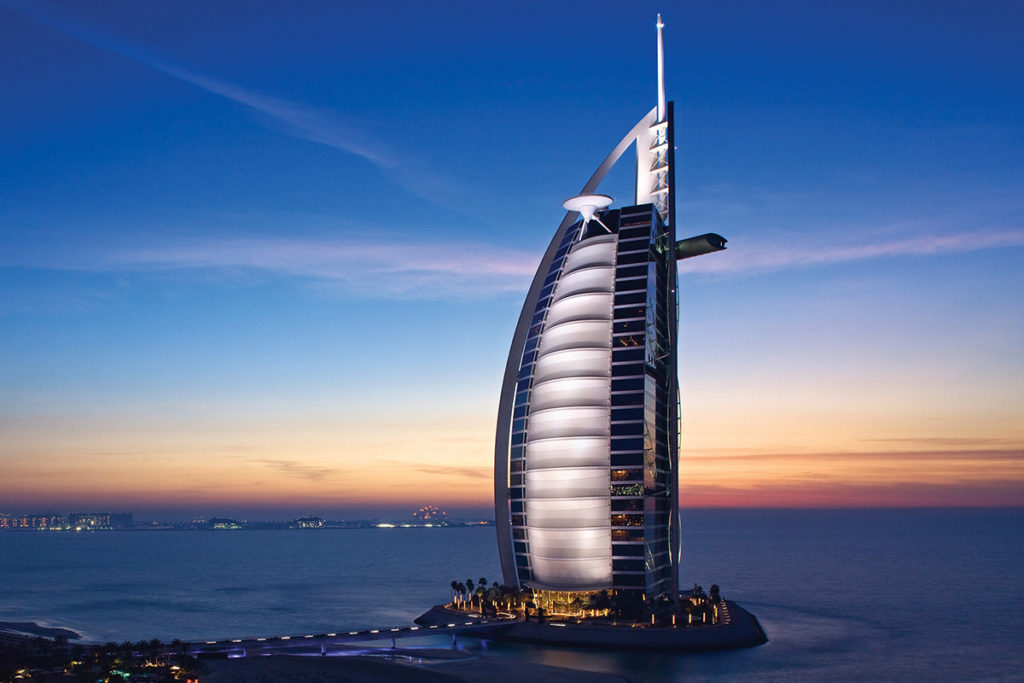
—
Contact Technical Consulting
Flexiiform is proud to be one of the leading units in Vietnam providing professional design and construction solutions for Tensile Fabric structures. With a team of well-trained and skilled Architects and Engineers, we are the only unit in Vietnam receiving professional advice from FasTech Company – The leading design and construction company of tensioned fabric structures in Thailand, with nearly 30 years of prestige and experience in the industry and successfully implementing more than 1,000 tensioned fabric projects in Thailand and Southeast Asia. With the strength of creative ideas in tensioned fabric architectural design and practical construction methods, Flexiiform is confident to bring the most optimal solutions for each specific project, similar to the Burj Al Arab Hotel tensioned fabric facade.
For expert advice or to request a detailed quote, please contact us. You can read more Reference video from Sotheby's.
Contact information:
Company: Flexiiform
Phone: +84 8678 68830
Website: https://flexiiform.vn/
Fanpage: https://www.facebook.com/flexiiform/


